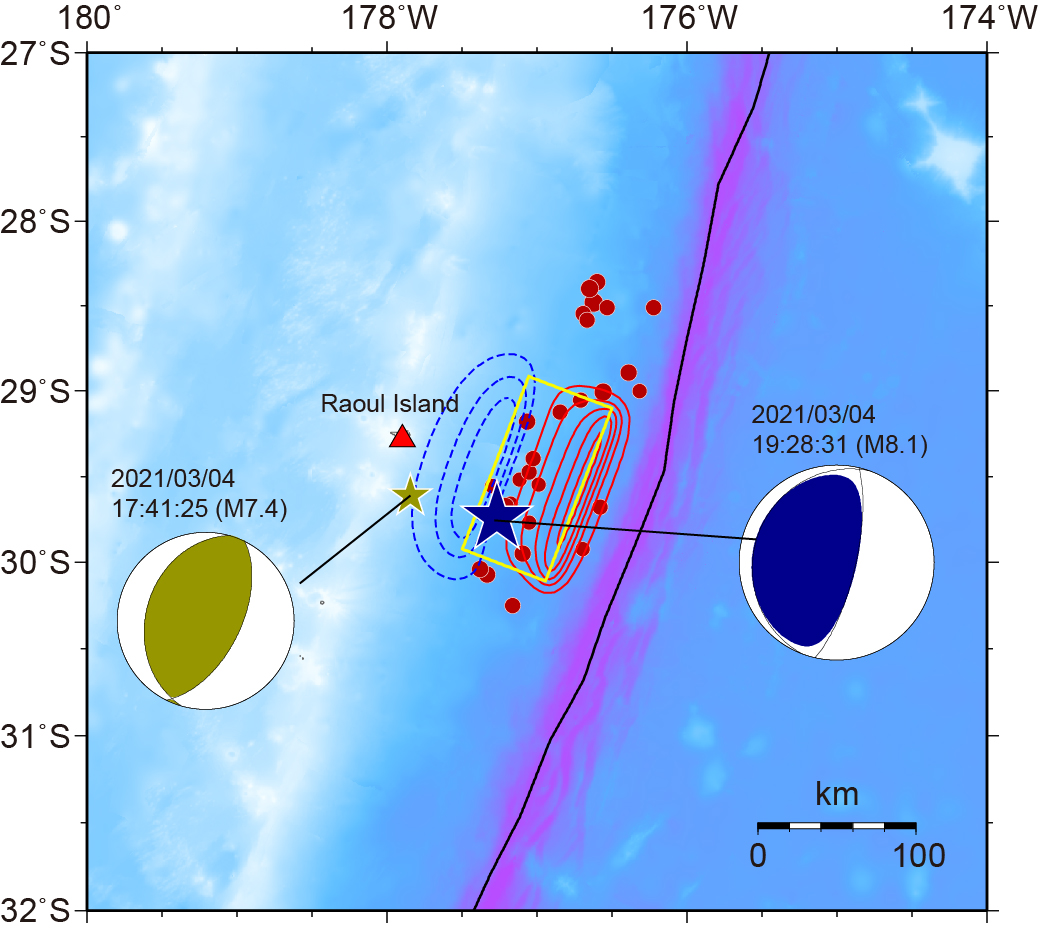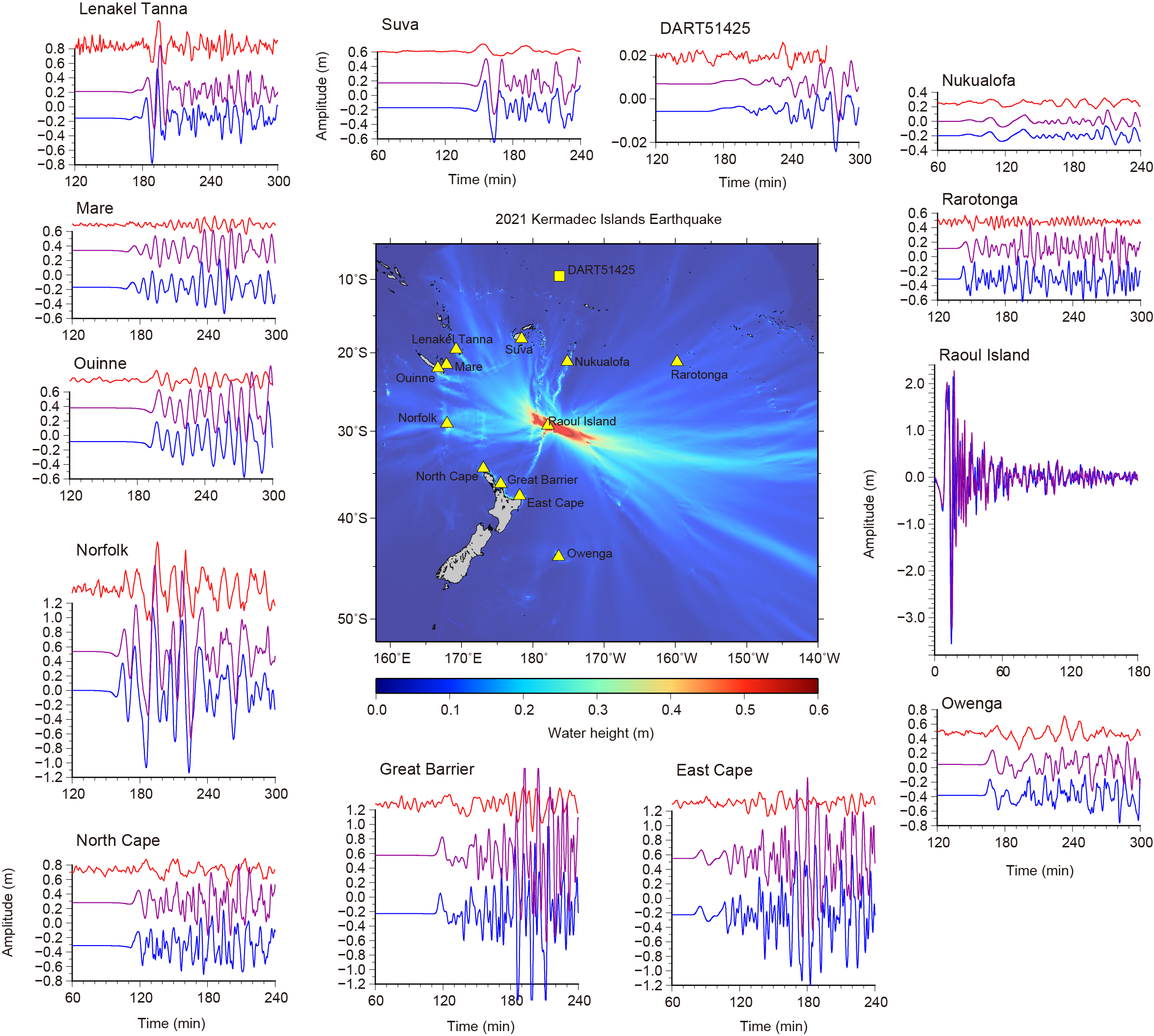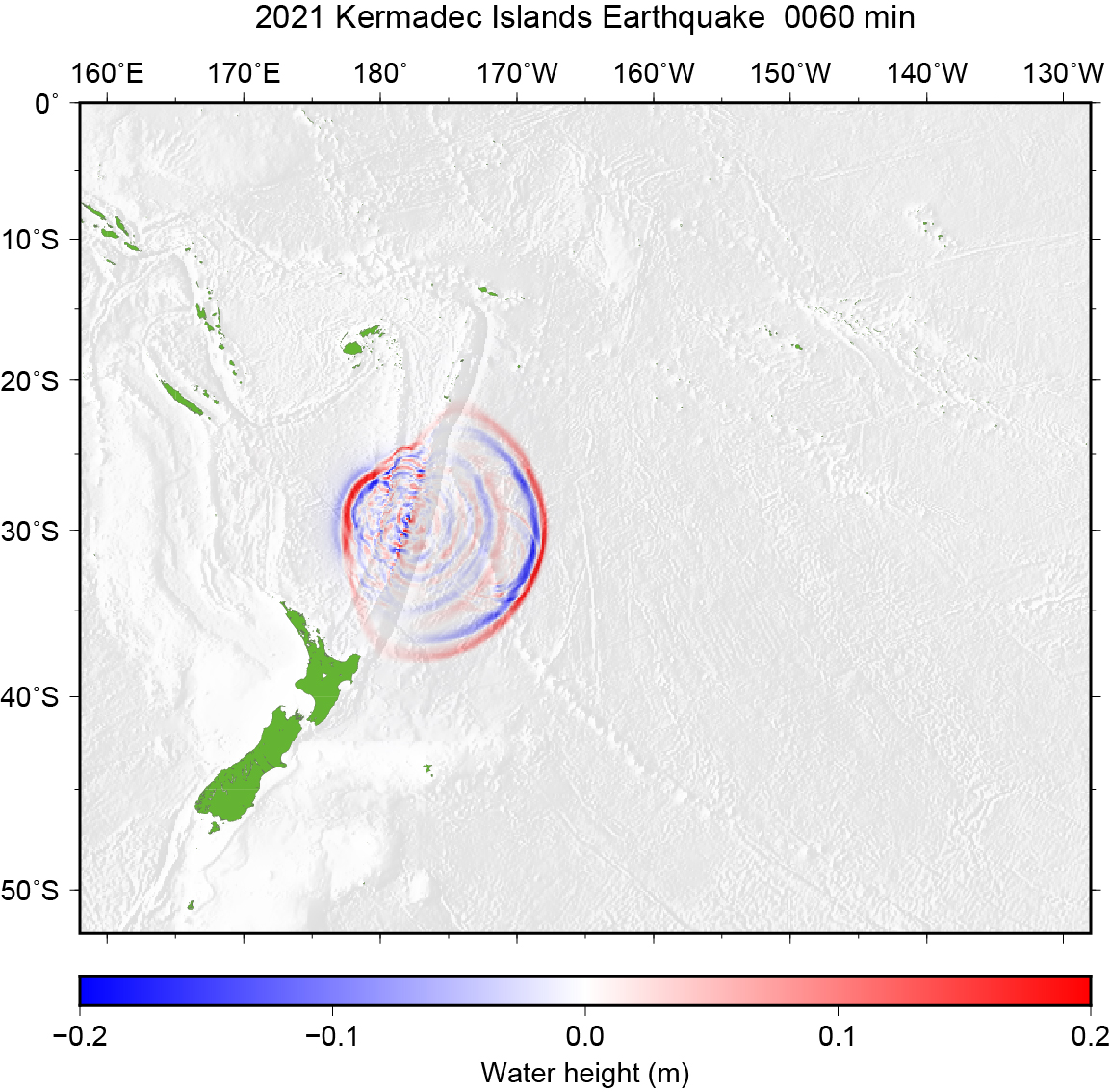| Kermadec Islands Earthquake on Mar. 4, 2021 |
We have simulated the tsunami generated from the earthquake at the Kermadec Islands, New Zealand (29.740°S, 177.267°W, depth = 19.4 km, M = 8.1 at 19:28:31 UTC according to
USGS) on March 4, 2021 (Fig. 1).
The assumed tsunami sources are located inside the aftershock area including the epicenter (Fig. 1).
The fault length and width are 120 km × 60 km. The focal mechanism is strike: 201°, dip: 16°, slip: 98° from the USGS's W-phase moment tensor solution (NP1). The top depth of the fault was assumed to 10 km. The average slip on the fault is 5 m. The seismic moment is 1.8 × 1021 Nm (Mw = 8.1) assuming the rigidity of 5 × 1010 N/m².
As the initial condition for tsunami, static deformation of the seafloor is calculated for a rectangular fault model [Okada, 1985] using the source model.
The used bathymetry data is the 15 arc-second grid data from
GEBCO_2020, which was resampled to 12 arc-second grid data.
To calculate tsunami propagation, the linear shallow-water, or long-wave, equations were numerically solved by using a finite-difference method [Satake, 1995].
We applied the phase correction method [Watada et al., 2014] to the calculated tsunami waveforms.
We have downloaded the
DART and
Tide gauge data
from the NOAA's and UNESCO/IOC's web sites, respectively,
and compared the simulated tsunami waveforms and the observed ones (Fig. 2).
We can see the tsunami propagation in the South Pacific Ocean (Fig. 3).

Fig.1 Tsunami Source Model
The red lines indicate uplift with the contour interval of 0.4 m, while the blue dotted lines indicate subsidence with the contour interval of 0.2 m. Aftershocks determined by USGS are shown by red circles. The focal mechanisms determined by USGS are also shown.

Fig.2 Maximum Height of Simulated Tsunami and Tsunami Waveforms
Solid lines in red indicate the observed tsunami waveforms. The blue lines are calculated tsunami waveforms.
Purple lines show the synthetic tsunami waveforms by applying the phase correction method [Watada et al., 2014].

Fig.3 Tsunami Propagation (Click to start animation)
The red color means that the water surface is higher than normal sea level, while the blue means lower.
| by Yushiro Fujii (IISEE, BRI) and Kenji Satake (ERI, Univ. of Tokyo) |
|
|
| References |
|
Okada, Y. (1985), Surface Deformation Due to Shear and Tensile Faults in a Half-Space, Bull. Seismol. Soc. Am., 75, 1135-1154. Satake, K. (1995), Linear and Nonlinear Computations of the 1992 Nicaragua Earthquake Tsunami, Pure and Appl. Geophys., 144, 455-470. Watada, S., S. Kusumoto and K. Satake (2014), Traveltime delay and initial phase reversal of distant tsunamis coupled with the self-gravitating elastic Earth, J. Geophys. Res., 119, 4287-4310. GEBCO Compilation Group (2020), GEBCO 2020 Grid (doi:10.5285/a29c5465-b138-234d-e053-6c86abc040b9) |
Last Updated on 2021/3/5